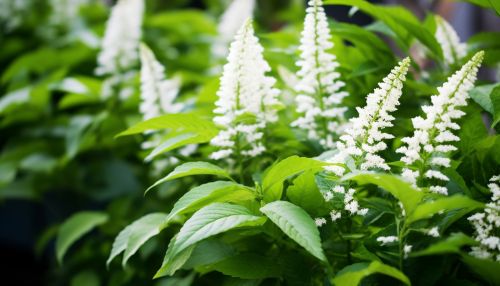Henna
Origins and History
Henna, known scientifically as Lawsonia inermis, is a flowering plant used since antiquity to dye skin, hair, and fingernails, as well as fabrics including silk, wool, and leather. The name "henna" also refers to the dye prepared from the plant and the temporary body art (staining) based on those dyes. Henna has been used since the Bronze Age in the eastern Mediterranean, including the Arabian Peninsula, North Africa, and the Indian Subcontinent.
The use of henna in the 4th-5th centuries in the Deccan of western India is clearly illustrated on Buddhist palm leaf manuscripts. In medieval times, henna was used for its medicinal properties and as a cosmetic, including the tinting of hair and fingernails.


Cultivation and Harvesting
Lawsonia inermis is a small tropical bush that grows in hot climates and can be found in most arid and semi-arid regions of the world, including parts of Africa, South Asia, and Northern Australasia. The plant produces the most dye when it is in a hot environment where there is a significant difference between day and night temperatures.
The leaves of the henna plant contain a natural and very effective coloring pigment: lawsone. This orange/red dye releases as the leaves are crushed. Drying, milling, and sifting the henna leaves into a fine powder maximizes the pigment (lawsone) release.
Preparation and Application
The dry powder is mixed with one of a number of liquids, including water, lemon juice, or strong tea, and other ingredients, depending on the tradition. The henna mix must rest for 6 to 12 hours so the leaf cellulose is dissolved, making the lawsone available to stain the skin.
Henna body art is made by applying henna paste to the skin: the lawsone in the paste migrates to the outermost layer of the skin and binds to the proteins in it, staining the skin. The stain can be from pale orange to nearly black, depending on the quality of the henna and how well the henna paste was made and applied.
Cultural Significance
Henna has been used to adorn young women's bodies as part of social and holiday celebrations since the late Bronze Age in the eastern Mediterranean. The earliest text mentioning henna in the context of marriage and fertility celebrations comes from the Ugaritic legend of Baal and Anath, which has references to women marking themselves with henna in preparation to meet their husbands.
In various parts of the world, including the Middle East and North Africa, henna has been used for centuries for body decoration and for its supposed properties of bringing good luck and warding off evil spirits.
Henna is also used extensively in India, where it is used for a variety of purposes such as hair treatment and decoration. Indian brides traditionally use henna in wedding ceremonies, with the groom's initials hidden within the design for the groom to find on the wedding night.
Health Effects
Henna has been used as a cosmetic and healing agent for over 5000 years. It has natural cooling properties and, when applied to the skin, can help reduce inflammation and soothe burns and eczema. Henna is also known to have antimicrobial properties and has been used as a preservative for leather and cloth.
However, henna can cause allergic reactions in some individuals, particularly those who have been sensitized to it through prior exposure. The most common reaction is contact dermatitis, but more severe reactions can occur.
